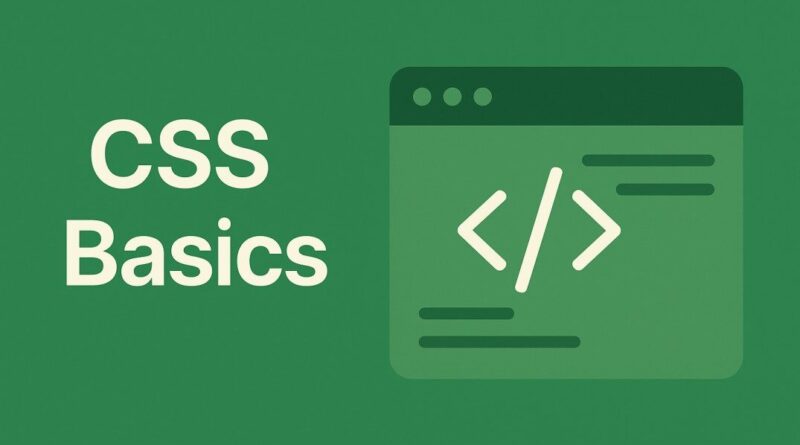CSS – Mastering the Box: Unpacking CSS Borders for Stunning Web Design!
Mastering the Box: Unpacking CSS Borders for Stunning Web Design!
Hey there, web design enthusiasts and aspiring developers! Ever wondered how those crisp lines, cool frames, and rounded corners magically appear around elements on a webpage? Well, today, we’re diving deep into one of CSS’s fundamental superpowers: the Border Property. This isn’t just about drawing lines; it’s about defining the very essence of your content’s visual boundaries, adding flair, and making your designs truly pop!
Think of every element on a webpage – a paragraph, an image, a button – as a rectangular box. This is the core of the CSS Box Model, a concept so crucial it’s practically the bedrock of web layout. And within this powerful box, the border acts as its frame, the decorative edge that separates it from its neighbors.
Let’s break down how you can wield this incredible tool to transform your web pages:
The Border Basics: Width, Style, and Color
The beauty of CSS borders lies in their simplicity and flexibility. You can control three key aspects:
border-width: As the name suggests, this controls how thick your border is. Want a subtle outline or a chunky frame? You decide! You can specify values in pixels (px), ems (em), or even use keywords likethin,medium, orthick.- Example:
border-width: 2px;orborder-width: medium;
- Example:
border-style: This is where you get creative with the look of your border. Do you want a solid line? A dashed one? Or something more exotic? CSS offers a fantastic array of styles:solid: A single, straight line (most common!).dashed: A series of dashes.dotted: A series of dots.double: Two parallel lines.groove: A 3D-effect border that looks “carved in.”ridge: The opposite of groove, looking “raised.”inset: A 3D-effect border that looks “pressed in.”outset: The opposite of inset, looking “pressed out.”none: No border at all (useful for overriding inherited styles!).- Example:
border-style: dashed;orborder-style: groove;
border-color: This determines the hue of your border. You can use named colors (likered,blue), hexadecimal codes (#FF0000), RGB values (rgb(255, 0, 0)), or even HSL values.- Example:
border-color: #3498db;orborder-color: green;
- Example:
The Ultimate Timesaver: The Border Shorthand!
While specifying border-width, border-style, and border-color individually gives you granular control, CSS offers a fantastic shorthand property that lets you define all three in one go. This is a massive time-saver and makes your code much cleaner and more readable!
The order is typically: border-width border-style border-color.
- Example: Instead of:CSS
border-width: 1px; border-style: solid; border-color: black;You can simply write:CSSborder: 1px solid black;Isn’t that neat? This single line instantly creates a sleek, 1-pixel solid black border around your element.
Shaping Up: The Magic of border-radius
Now, for a touch of elegance and modern design, let’s talk about border-radius. This property is your secret weapon for transforming those sharp, rectangular corners into beautifully rounded edges. Say goodbye to boring squares and hello to visually appealing shapes!
You can specify a single value to apply the same rounding to all four corners, or provide up to four values for individual control over each corner (top-left, top-right, bottom-right, bottom-left).
- Example (all corners rounded equally):CSS
border-radius: 10px; /* Gives all corners a 10px curve */ - Example (different rounding for each corner):CSS
border-radius: 15px 5px 20px 0; /* Top-left, top-right, bottom-right, bottom-left */
Using border-radius is fantastic for creating soft buttons, stylish image frames, or even circular elements (by setting border-radius: 50%; on a square element!). The possibilities are truly endless, allowing you to craft unique and engaging visual experiences for your users.
Why Borders Matter for Your Website’s Success
You might be thinking, “It’s just a border, right?” But here’s why mastering this seemingly small detail can have a huge impact on your website’s appeal and user engagement:
- Visual Hierarchy: Borders help visually separate content, making your page easier to scan and understand. They guide the user’s eye to important information.
- Aesthetics and Branding: Well-designed borders contribute to the overall look and feel of your website, reinforcing your brand’s personality.
- User Experience (UX): Clear visual boundaries reduce cognitive load for users, making navigation more intuitive and enjoyable.
- Readability: Thoughtful use of borders can improve the readability of text blocks and create distinct sections.
- Modern Design: Rounded corners and subtle borders are hallmarks of contemporary web design, making your site feel fresh and professional.
Ready to Frame Your Masterpiece?
The CSS border property, with its shorthand and the magical border-radius, is an incredibly versatile tool in your web design arsenal. Experiment with different widths, styles, colors, and radii to see how they transform your layouts.
So go ahead, open your code editor, and start playing with borders! You’ll be amazed at how these simple lines can add so much character, structure, and visual appeal to your web creations.
What are your favorite border styles or creative uses for border-radius? Share your thoughts and examples in the comments below! Let’s inspire each other to build even more beautiful and user-friendly websites!


